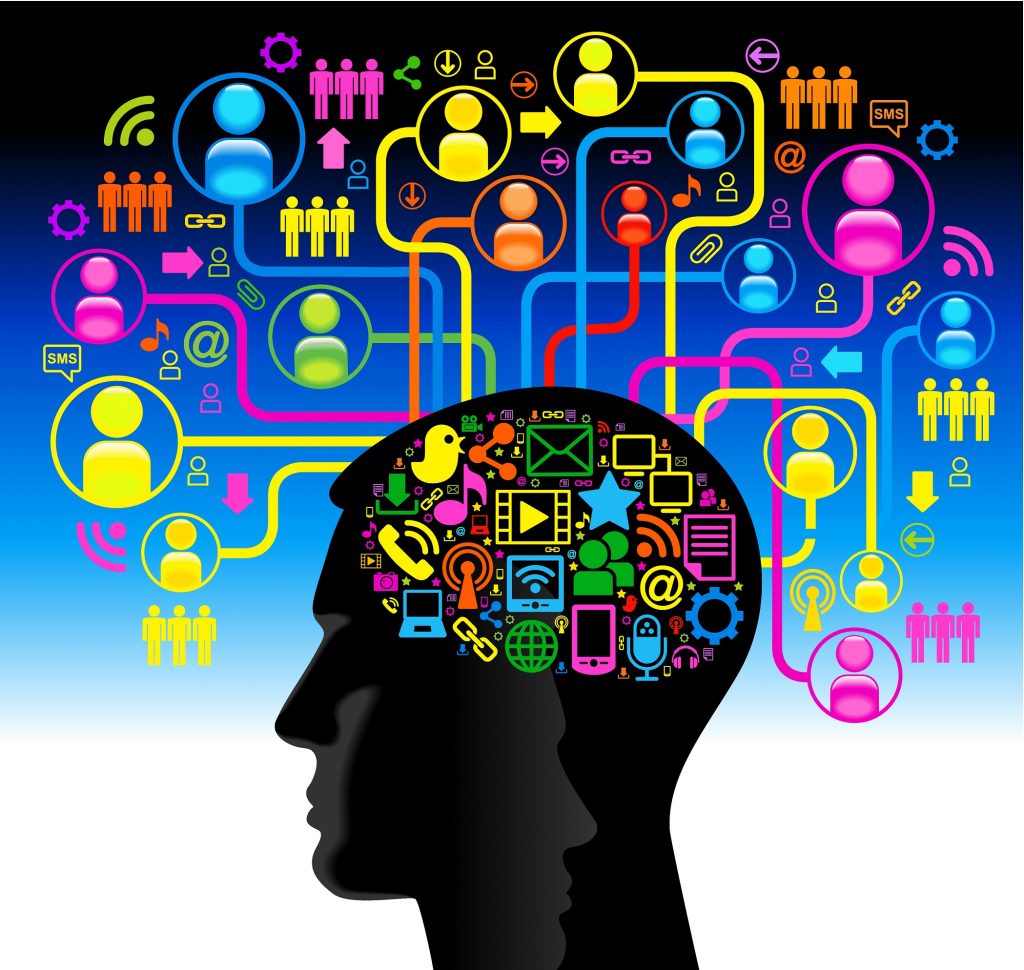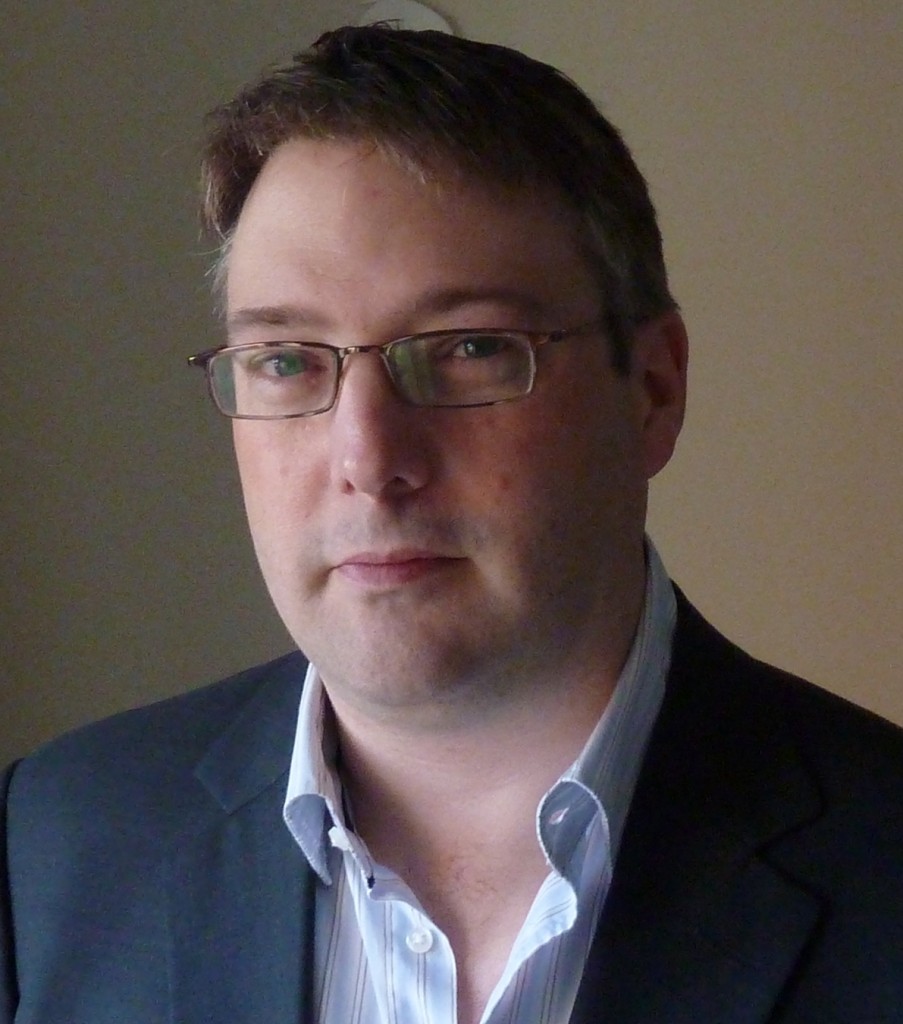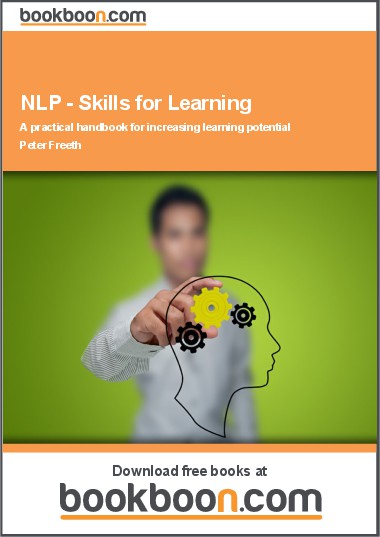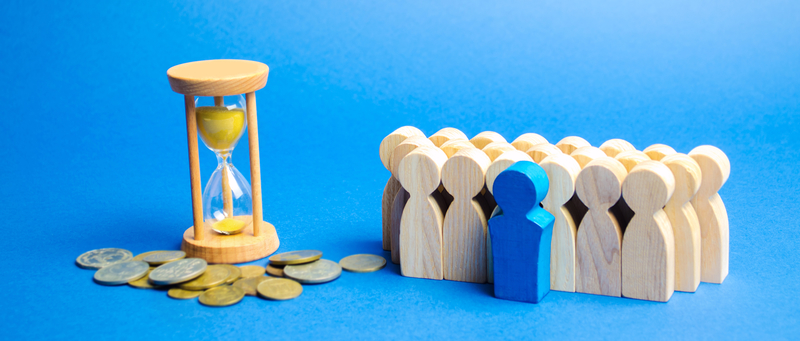Peter Freeth on how to enhance your potential


Ever heard of NLP (Neuro-Linguistic Programming)? Bookboon.com author Peter Freeth answers a few of our questions around his book “NLP – Skills for learning” and explains how progress starts with what you tell your brain. Take a look!
1. Can you tell us more about what a “labelling system” is? You mention it in the context of how people develop behaviours throughout their lives.
One of the most important mental mechanisms that we develop from early childhood is the ability to represent the world as a series of symbols. Starting perhaps with ‘mama’ and ‘dada’, children quickly move onto ‘cat’, ‘dog’ and then actions such as ‘give’. Just think about your computer – there are several different symbols that you understand for the command to print something, including a menu action, the keyboard action ‘control P’ and the printer icon on the toolbar. As we grow and learn, we have new experiences and have to figure out how to symbolise those experiences and communicate them to other people. When you describe a holiday, you don’t just say, “We went to Spain on August 30th and returned on September 14th. The weather was mostly warm and sunny”, you tell people how you felt about it, so that they can better understand your experience.
Our labelling system is therefore a vital part of how a trainer can begin to interact with a learner’s inner world. By paying careful attention to the language that people use, we can gain valuable insight into how to help them learn new behaviours more easily and effectively. And by behaviour, I mean anything from ‘leadership’ to computer skills – all involve the learner doing something, so by definition this is a behaviour which is underpinned by the learner’s model of the world.
2. When coaching, why do you think it is a good idea to include physical versions of exercises into a session? Can you give an example of physical exercises?
When a coach works only conversationally with a client, all they get in response is words, and perhaps some facial expressions. A significant proportion of the client’s communication is therefore inaccessible to the coach or trainer. When the coach asks a question, the client has too much time to think of the ‘right’ answer rather than saying what’s really true for them.
Here’s an experiment that you can do. Next time you give someone a choice and they say something like, “I don’t mind”, such as where to go for dinner, or which film to watch, hold out your two hands, palms up. Tell them that, for example, your left hand is pizza and your right hand is Chinese. Look them right in the eye and ask them which they want. A second or two before they answer, you’ll see them glance, very quickly, at their preferred choice. What their body tells you is often very different to what they say.
So physical exercises help in three ways; firstly they enable the coach to get the answer that is really true, rather than the answer that sounds good. Secondly, they enable the client to answer without having to actually answer, which is a big help when they’re discussing something emotive or traumatic. Thirdly, it enables the client to uncover information that the client may not themselves be consciously aware of yet, such as reaching a decision that they have been mulling over for a long time.
3. You mention the difference between someone saying “I can’t do…” and “I don’t do…”. How are these two types of declarations different?
These declarations are called modal operators, and they modify the way in which a verb works. I can play badminton, but I’m not doing it right now. However, I can’t play squash. When you listen to the modal operators that a person uses, they tell you how that person organises their memories and abilities around a certain task. You perhaps already know, at least instinctively, that if a person says that they’re going to try to do something, it means that they expect to fail. “I’ll try to come to your party”, or, “I’ll try to get my report finished” are ambiguous, and the listener will typically hear what they want to hear, instead of hearing the “try” for what it really is.
Many people will be making New Year’s resolutions soon, so this is a good time to notice modal operators in practice. “I really ought to lose some weight”, “I want to start cycling to work again”, and “I must get round to booking myself onto an art class” all say very different things about the speaker’s confidence in their resolution.
Trainers can use modal operators in two ways to overcome barriers to learning. The first involves listening to modal operators and adjusting their approach accordingly. The second is to modify modal operators to get a desired result. If a learner says, “I can’t do this, I’ll never get it right”, then the trainer might respond with, “Yes, I can see that you’re not quite there yet, that must be frustrating. Sometimes, people get frustrated just before they find the solution, don’t they?”. The trainer has converted the learner’s “can’t”, which means “never” to a “not now” which presupposes that success is just around the corner.
Probably the biggest difficulty with using language in this way is that, in the cold light of this sentence, it seems like it can’t possibly make a difference. But you’re not in the state of mind or the situation of the ‘stuck’ learner, so you interpret the language very differently. The important thing is to have a go and see what happens for yourself.
4. Let’s talk about the “images” you refer to as ways to create confidence. How does this work? Seems like a great method! Do a lot of people use it?
In fact, I would say that everyone uses it, because every person on the planet is goal oriented. We think about what we want before we take action to get it. That might be months ahead of time, or it might be just milliseconds. However, every action is preceded by a thought – an idea, a need, a desire, even a fear or an instruction from someone else. That idea usually takes the form of either a feeling (like thirst) or an image (like you winning the lottery).
It seems that many people worry, and worry is just an application of the same process – you imagine something that hasn’t happened yet, you picture it turning out badly, and you act as if it is happening now. If the things that you worry about were to really happen then your reaction would be entirely appropriate, however they haven’t happened, and so your response is more likely to make them happen. Going to a job interview under a dark cloud because you’re sure you won’t get the job gives the interviewer a sense that you’re pessimistic, negative and withdrawn. Not the kind of person they want to hire, and also not the kind of person that you are!
The simple trick that I’ve developed to help people with worry is this. Most people will ask the worrier, “Why are you worried?” but this is an unhelpful question because it confirms the worrier’s fears. Instead ask, “What do you imagine is going to happen?” The worrier then describes their image, and you ask, “Is that what you want to happen?” The worrier answers, “No!”, and you say, “Well, imagine something else then!”
It’s important to be realistic in all of this. If you imagine winning the lottery, it might encourage you to buy a ticket, but that’s not really an ideal way out of financial difficulties. It’s better to picture yourself taking action, getting results that you’re in control of and feeling good about yourself as someone who can set goals and make them happen.
5. When did you discover NLP? What were you doing/using before?
From when I was at school, I read books on psychology and sociology as I was interested in how people worked. In 1992 I went on an internal training course in the company that I worked for which turned out to be about NLP, and from there I just used the little that I knew in everyday meetings and so on. In 1999 I started running a large practice group in London that attracted some very well-known International trainers and up to 90 people each month, and from there I took a voluntary redundancy opportunity and started my own business. So I think that before I discovered NLP, I was just doing what most people do, learning to get through human interactions by trial and error, mostly error! I started writing about what I’d learned in about 1999, really as a way to help me to organise my own thoughts and capture some of the interesting discoveries I’d made. However, other people seemed to like my books too and it all grew from there. Today, I concentrate more on ‘modelling’ with NLP, which is a process for getting inside the heads of experts and figuring out what they do. It’s the process used to create all of NLP’s techniques, and I use it to model high performers and create custom training programs for corporate clients.
If you want to learn more about NLP and coaching, download Peter Freeth’s book “NLP – Skills for learning” right here.




